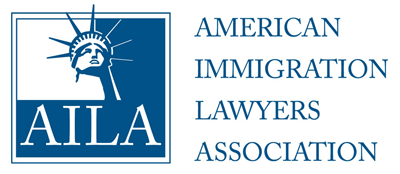Visa de Turista y ESTA / VWP: Tramite Consular versus Ajuste de Estatus

Hay dos formas principales de adquirir residencia:
- Tramite Consular
- Ajuste de Estatus
Lo siguiente explicará en gran detalle las muchas preguntas relacionadas con este tema.
¿Qué es una visa o exención de visa?
Una visa o exención de visa se describe mejor como un “vehículo” para entrar y salir de un país. El vehículo puede ser por automóvil, autobús, avión, bote, etc.
En los Estados Unidos un vehículo debe cumplir con ciertos requisitos, ser apto para manejar, estar seguro y cumplir con la ley.
Cuando alguien usa una visa o exención de visa como vehículo para ingresar a los Estados Unidos también se aplican normas, contratos y leyes. Este blog te lo explicará.
¿Qué es el programa de exención de visa o ESTA?
ESTA es un sistema informático que proporciona una “Exención de Visa” para ingresar a países que están en el Programa de Exención de Visa. La entrada a los Estados Unidos es de hasta 90 días. En general, se puede usar ESTA para vacacionar en los Estados Unidos durante 90 días en un período de 180 días. Por lo tanto, no es aconsejable utilizar ESTA como método de estadía a largo plazo en los Estados Unidos.
Ejemplo: Paul usa ESTA para permanecer en los Estados Unidos durante 60 días en el mes de enero y febrero. Paul se va por 30 días o por todo el mes de Marzo, y trata de usar ESTA para visitar nuevamente. La Aduana de los Estados Unidos puede otorgar otros 90 días O solo puede otorgar otros 30 días, ya que eso es lo que sobra entre los 180 días que fueron otorgados.
Ejemplo 2: Paul usa ESTA para permanecer en los Estados Unidos durante 90 días durante los meses de enero, febrero y marzo. Paul se va por 90 días e intenta usar ESTA para visitar nuevamente en julio. La Aduana de los Estados Unidos puede otorgar otros 90 días desde que pasaron 90 días y un nuevo período de 90 días bajo ESTA no excedería los 90 días en un período de 180 días.
Propósito de ESTA: Solo vacaciones, y no para:
- Casarse en los Estados Unidos
- Trabajar en los Estados Unidos ilegalmente
- Estudiar en los Estados Unidos
- Emigrar a los Estados Unidos
En la aplicación ESTA, muchos elementos son referencias que esencialmente son los “Términos y condiciones de uso”. Incluso hay disposiciones para:
- Si infringe los Términos y el Acuerdo, el Titular renuncia al derecho a un juez o audiencia
- Si viola los Términos y Acuerdo, el Titular puede ser llevado directamente al Aeropuerto para su Deportación Inmediata.
ESTA es muy fácil de adquirir para muchos países, pero también es el más fácil de caer en violaciones y fraude migratorio. Puede encontrar más información sobre ESTA y el Programa de exención de visa aquí:
/immigration/what-is-esta-and-the-visa-waiver-program/
Que es una Visa de Turista?
Una visa de turista permite vacaciones en los Estados Unidos por hasta 180 días. En general, se puede usar la Visa de Turista para vacacionar en los Estados Unidos durante 180 días en un período de 360 días.
Propósito de una Visa de Turista: Solo vacaciones, y no para:
- Casarse en los Estados Unidos
- Trabajar en los Estados Unidos ilegalmente
- Estudiar en los Estados Unidos
- Emigrar a los Estados Unidos
¿Qué es un B-2 Estatus Canadiense (aunque los canadienses normalmente no reciben visas de turista)?
Por tratado, un Canadiense puede ingresar a los Estados Unidos. La entrada es similar a ESTA o VWP, pero restringida al igual que una visa de turista. Para los vecinos estadounidenses del norte, viajar dentro y fuera de los Estados Unidos es simple. Sin embargo, los canadienses no pueden usar sus visitas a los EE. UU. Para hacer lo siguiente:
- Trabajar en los Estados Unidos ilegalmente
- Estudiar en los Estados Unidos
- Emigrar a los Estados Unidos
Resumen:
Aunque alguien use una Visa para ingresar a los EE. UU., El MAL USO de la Visa o la Exención de Visa constituye Fraude de Inmigración o Intención de Inmigrar. Independientemente de cómo alguien ingrese a los EE. UU., La “restricción” de la visa y la exención de visa es que no pueden usarlo para inmigrar a los EE. UU.
Si alguien realmente quiere inmigrar a los EE. UU., entonces se requiere una visa de inmigrante de tarjeta verde o una visa de inmigrante prometida a través del trámite consular.
¿Cuáles son los requisitos para el Ajuste de Estatus?
El Ajuste de Estatus (o también conocido como AOS) cambia / ajusta o deshabilita la Visa utilizada para ingresar a los EE. UU. Y la cambia a Residencia Permanente Legal (o también conocida como Tarjeta Verde).
Para calificar para el AOS, la presentación de un matrimonio a un ciudadano estadounidense (el más común) requiere:
- Matrimonio por amor
- Matrimonio entre el titular de la visa y el ciudadano Estadounidense
- Una entrada legal y sin restricciones a los Estados Unidos (e.g. Visa or Visa Waiver)
Usar una visa de no-inmigrante para propósitos de inmigración es ilegal.
¡Pero mi amigo presentó un ajuste de estado para el cónyuge y recibió una tarjeta verde!
Hay excepciones a los elementos anteriores. Inmigración de los Estados Unidos Consideraría (1) las circunstancias que rodean la entrada y (2) lo que ocurre durante la estadía en los Estados Unidos.
Aquí hay algunos ejemplos conyugales de momentos en que se podría permitir AOS:
- Cónyuges se conocieron en los Estados Unidos por primera vez después de su entrada
- Novio y novia se encuentran en los Estados Unidos, y el ciudadano Estadounidense sorprendió al otro con una propuesta de matrimonio
- El titular de la visa o exención de visa quedó embarazada
- El titular de la visa o exención de visa se enfermó y no pudo viajar
Sin embargo, las excepciones no disculpan la clara intención de obtener una Visa o de un Titular de exención de visa para emigrar a los Estados Unidos.
Si tiene alguna inquietud, debe hablar con un abogado de inmigración local, o puede llamar al bufete de abogados Fickey Martinez, P.L.L.C. al (910) 526-0066.
Publicaciones de blog relacionadas:
Descargo de responsabilidad: El abogado o editor de un bufete de abogados pone a disposición este Blog solo con fines educativos, así como para brindarle información general y una comprensión general de la ley, no para proporcionar asesoramiento legal específico. Al usar este sitio de blog, usted comprende que no existe una relación abogado-cliente entre usted y el editor del Blog / Sitio web. El Blog no debe utilizarse como sustituto de asesoramiento legal competente de un abogado profesional con licencia en su estado.
The post Visa de Turista y ESTA / VWP: Tramite Consular versus Ajuste de Estatus appeared first on Fickey Martinez Law Firm.












